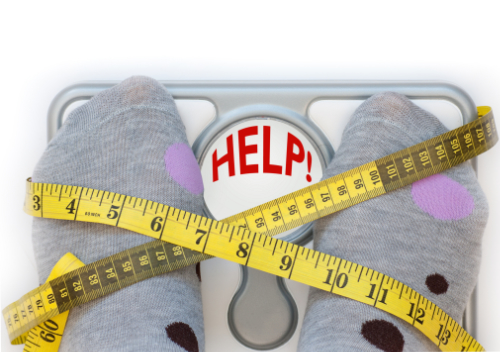
A large portion of the patients that seek out chiropractic care are suffering from some form of back pain. While chiropractic adjustments and associated therapies can do a lot to ease back pain symptoms and aid in healing, lifestyle changes are also quite important – particularly weight loss. Excess weight puts increased pressure on the spine, especially the lower back. And the weight becomes excessive when you gormandize or if you do not have a smart diet choice. The more chiropractic patients can near their ideal weight, the easier it becomes to treat and often eliminate the back pain. Of course, weight loss can be difficult for many people, which is why it is important to rely on any weight loss support options available and have as much knowledge on the topic as you can.
The Importance of Losing Weight for Chiropractic Patients
Research shows that obesity makes back pain more likely.
Research has shown that excess weight and obesity do increase the risk of suffering from low back pain. The same research has shown that supplements ingested for extended periods of time, viz. Isagenix eshots, help significantly in achieving weight loss. A meta-analysis of the research on obesity and low back pain found that overweight and obese individuals were most likely to seek care for low back pain, including chronic back pain. Betson , Bets10
The components of the spine can wear down.
The spine is strong, but it is also delicate. The vertebrae are linked and supported by soft tissues, like discs, ligaments and tendons.
These soft tissues make it possible to move, flex, twist and turn in a variety of ways, allowing your body to be quite mobile. But these soft tissues are prone to wear and tear.
Even a healthy body will experience wear and tear as it ages. When you add extra weight, though, you increase the wear and tear – and become more susceptible to injuries.
Extra body weight increases damage to the spine.
If you have ever carried an object for an extended period of time, like a bag of groceries up and down stairs or a jug of liquid across a parking lot, you know how it can wear you down. While you may feel fine at first, the longer you go, the more tired you become.
Extra body weight is something you carry around with you everywhere you go. Across the parking lot. Up the stairs. Even sitting in a chair. The structural components of your body, including your joints and the muscles that support them, are constantly forced to handle the extra pressure.
All the extra pressure transfers force through your joints, including your spine. Over time, the force will do damage. Discs will wear out faster, which can lead to degenerative disc disease and back pain.
Injuries can become more severe.
The extra weight makes every accident and injury more damaging. Slipping and catching yourself, which may have been okay before, could now pull or tear muscles and tendons. Every time you are in an accident, your body will have a harder time maintaining safe alignment.
Common Injuries Caused by Excess Weight
1. Herniated disc
A herniated disc occurs when the tough outer layer of the disc is torn, allowing the soft inner layer to protrude. The protrusion can put pressure on nerves in the spine.
2. Pulled and torn soft tissues.
Excess weight makes it more likely that you will pull or tear muscles, tendons and ligaments.
3. Low back pain
The lower back, or lumbar spine, is the part of the spine where most of the pressure is placed from excess weight. That is why low back pain is the most common form of injury we treat in overweight patients.
How Losing Weight Helps
Every pound you lose is one less pound your body must carry. The closer you get to your optimal weight, the easier it will be for your body to support your spine. When you get chiropractic adjustments, they will be more likely to remain in place. A healthy weight makes chiropractic care more effective.
If you are suffering from back pain and excess weight, please contact us. Our chiropractic team can help you in your weight loss journey, and we can treat your pain in a way that is both effective and non-invasive.
Leave a Reply